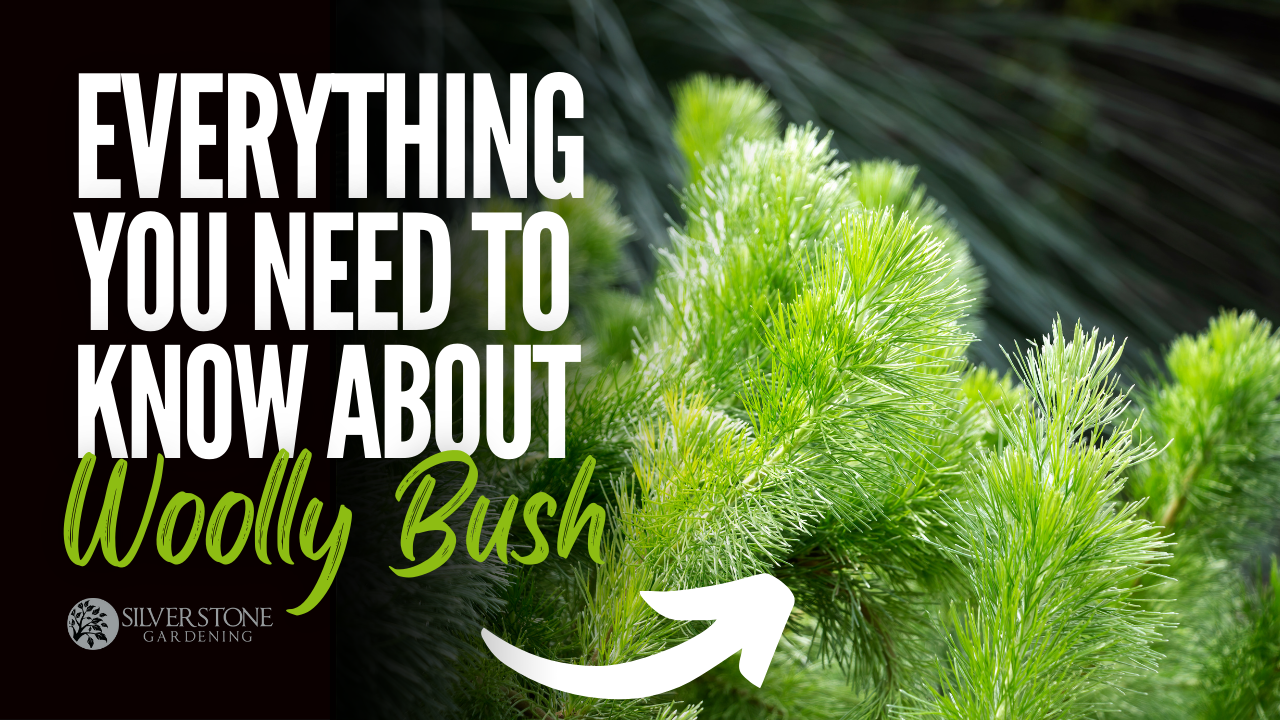
A Distinctive Australian Native Beauty
Adenanthos, commonly known as Woolly Bush, is an enchanting Australian native plant that holds a unique charm for beginner gardeners. It gets its name from it’s super soft leaves that almost feel like wool.
Its distinctive appearance, vibrant flowers, and resilience make it an excellent choice for those looking to add a touch of Australian beauty to their gardens. In this comprehensive guide, we’ll walk you through everything you need to know about Woolly Bush – from varieties and growing conditions to maintenance tips and common pitfalls.
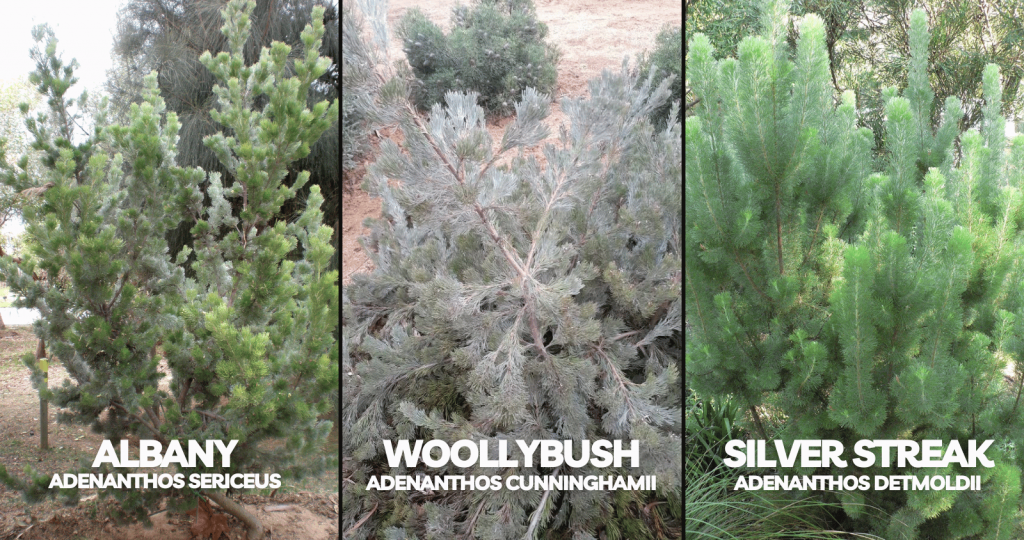
Varieties of Woolly Bush – Adenanthos
As a beginner, it’s exciting to explore the various varieties of Woolly Bush. Adenanthos sericeus, Adenanthos cunninghamii, and Adenanthos detmoldii are popular choices in Australia, each offering unique features. These varieties differ in size, foliage texture, and flower colors, providing a wonderful array of options for your garden.
Adenanthos sericeus, also known as Albany woolly bush, is a larger variety that can grow up to 3 meters tall. Its silvery-gray foliage is soft and woolly, giving it a unique texture that adds interest to any garden. Adenanthos cunninghamii, or woollybush, is a medium-sized variety that reaches around 2 meters in height. Its leaves are narrower and more compact, creating a dense and bushy appearance. Lastly, Adenanthos detmoldii, commonly called Albany woollybush ‘Silver Streak’, is a smaller variety that only grows to about 1 meter tall. Its foliage is silvery-white with dark green streaks, making it a striking addition to any garden. With these different varieties, you can mix and match to create a stunning display of colors, textures, and heights in your garden.
Growing Conditions
Woolly Bush is a forgiving plant that thrives in well-drained soils and basks in sunlight. Whether you have sandy or loamy soil, this adaptable plant can make itself at home. It’s known to withstand coastal and inland conditions, making it a fantastic choice for beginners facing different climates. Woolly Bush is also quite hardy against frost, adding to its beginner-friendly nature.
Its ability to withstand frost makes it a popular choice for gardeners in colder regions. Additionally, the Woolly Bush is a low-maintenance plant, requiring minimal pruning and care. It can grow to be quite tall, reaching heights of up to 10 feet, providing a beautiful backdrop or focal point in any garden. The unique texture of its leaves adds an interesting dimension to the overall aesthetic, creating a visually appealing landscape. Furthermore, the Woolly Bush is known for attracting various pollinators, such as bees and butterflies, making it an excellent choice for those looking to support local ecosystems. Overall, this versatile and resilient plant is a wonderful addition to any garden, offering beauty and ease of care for gardeners of all levels of experience.
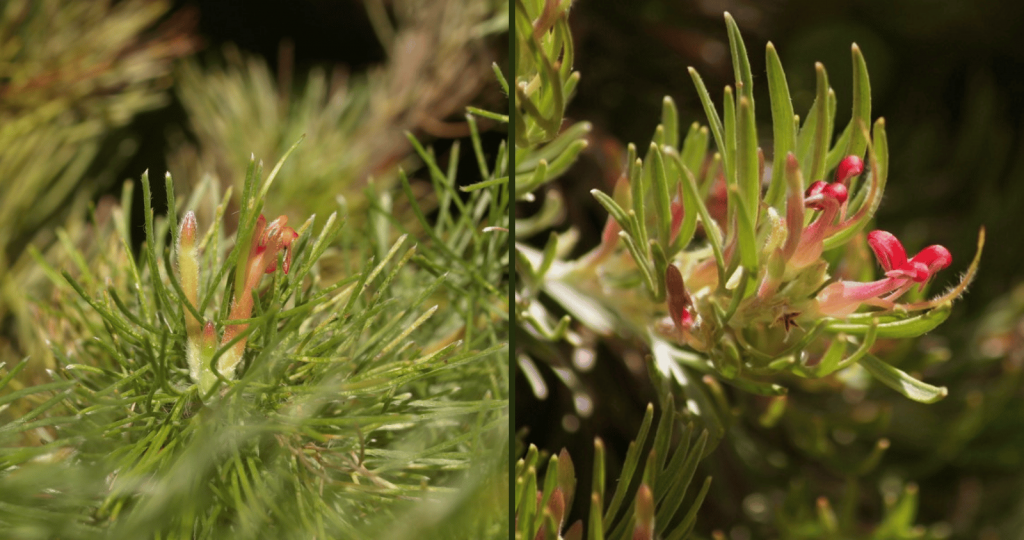
How big to Woolly Bushes grow?
Typically, a Woolly Bush can grow to a height of 2 to 4 meters, depending on the specific variety. It can be hedged to keep the plant to a specific height to suit your garden if needed.
How much sunlight do Woolly Bushes need?
Woolly Bush’s love for sunlight. Aim to provide your plant with at least 6-8 hours of sunlight each day. As an Australian native it can handle the harsh sun and hot weather.
If you notice sparse foliage, elongated stems, or fewer flowers, it might be an indication that your Woolly Bush is not receiving enough sunlight. It is also common for a Woolly bush that is planted on the south side of a house to grow out towards the light, which often makes the plant look asymmetrical and is not what most people want.
Whilst it is hard to move a Woolly Bush once planted that is often the only way to improve it’s health if it is not thriving in a shaded position. Creating an optimal environment for your Woolly Bush will not only ensure its health and growth but will also attract butterflies to your garden.
Butterflies are known to be attracted to bright sunlight, so providing your plant with ample sunlight will encourage butterflies to visit and lay their eggs. By adjusting the placement of your Woolly Bush, you can ensure that your plant receives the necessary sunlight it needs, making it an ideal habitat for butterflies.
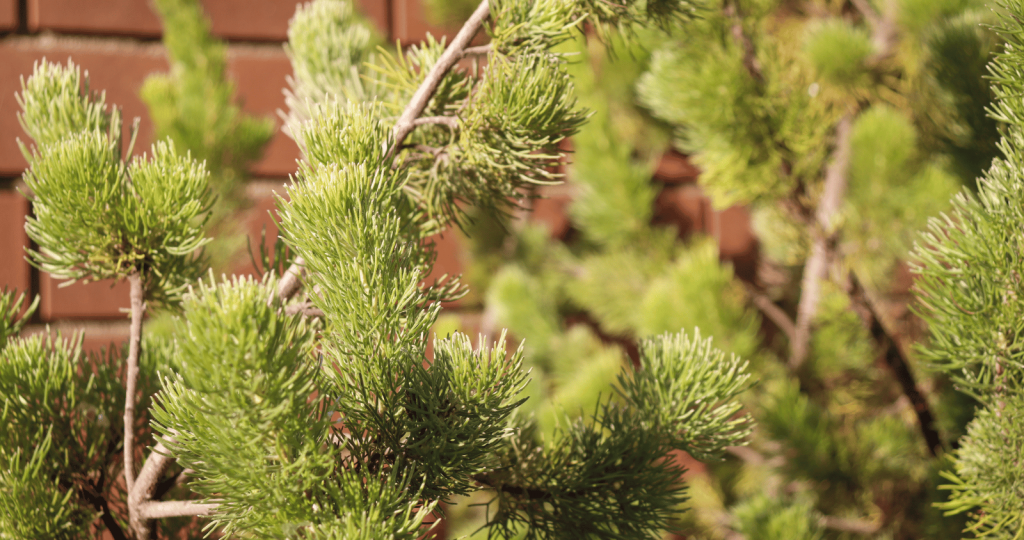
Drought Tolerance and Watering
Drought Tolerance
Woolly Bushes are quite drought-tolerant once established. This means you won’t need to worry too much about water, making it a low-maintenance option. However, it’s important to note that even though Woolly Bush is drought-tolerant, it still requires regular watering during its initial establishment period. Once the plant has developed a strong root system, it will be better equipped to withstand periods of drought and require less frequent watering.
Weekly Watering Needs
On average, Woolly Bush requires about 20mm of water per week. However, always keep an eye on your plant, adjusting watering based on factors like soil type, climate, and local weather conditions. It’s also worth mentioning that overwatering can be detrimental to the health of the Woolly Bush, so it’s important to ensure proper drainage and avoid waterlogged soil. Additionally, mulching around the base of the plant can help retain moisture and reduce the need for frequent watering.
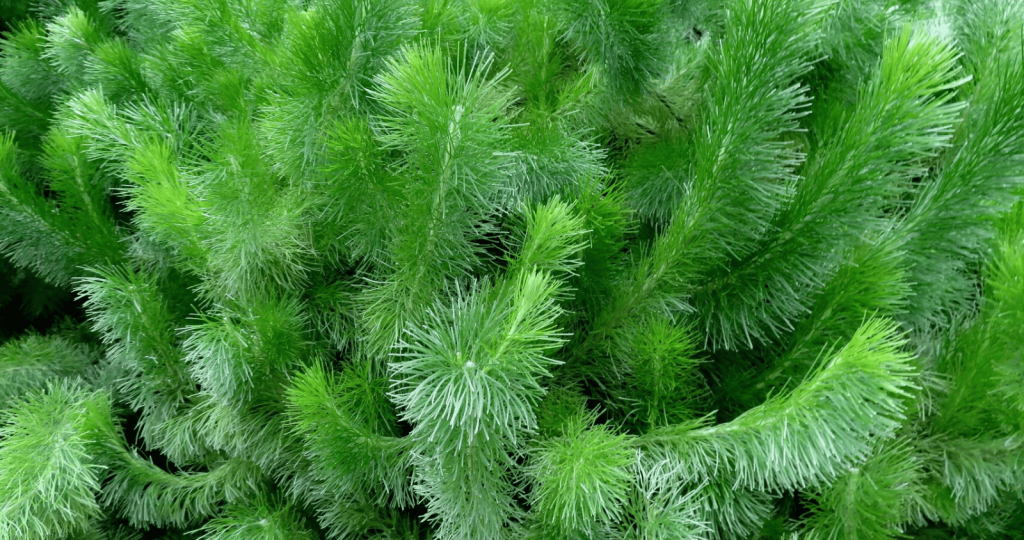
Pruning Woolly Bush – Adenanthos
Pruning Frequency
Typically an annual pruning session, in late winter or early spring, is all that is needed for Woolly Bushes. However, if you are trying to maintain a more formal style hedge then hedging every 8-12 weeks will be more beneficial.
How to do an annual prune on a Woolly Bush:
The first thing to do is to remove any dead or damaged branches, as well as any overcrowded or crossing branches. This will help maintain the overall shape and health of the Woolly Bush plant. Additionally, pruning can also stimulate new growth and promote a bushier appearance. Regular pruning of the Woolly Bush plant can also help prevent diseases and pests from infesting the plant, as well as improve air circulation within the foliage.
How to hedge a Woolly Bush:
The first thing to know is that Wooly Bushes are actually rather difficult to hedge. Their soft/fine leaves are hard to cut if you have blunt or cheap equipment. The honest truth is that these plants are not best suited as a formal hedge with sharp/crisp lines, but rather an informal hedge.
To hedge a Woolly Bush make sure your hedge trimmer is sharp. If you are a beginner you may want to set up a string line to help keep your cuts straight. Keep the blade speed of your hedge trimmer fast and move your trimmer back and forth over the hedge creating multiple passes, this will give a much cleaner finish then one pass only.
Best Time to Prune
Late winter or early spring is the ideal time for pruning Woolly Bush. This helps stimulate new growth and maintains a compact, well-shaped plant. Pruning during this time also allows the plant to recover before the onset of warmer weather, reducing the risk of stress or damage. It is important to avoid pruning during periods of extreme heat or cold, as this can further stress the plant and hinder its ability to heal properly. (This product is great for helping with heat stress or frost, best applied before the stress but can also help after or during a heat wave)
However, if you are pruning to remove dead, damaged or unwanted limbs you can do this any time of the year.
Pruning Tools
For remove dead or damaged branches and shape your Woolly Bush, a hand saw or chainsaw is all you will need. (If you are looking for a great folding saw, this is my recommendation.)
For regular hedge trimming, a telescopic or long handled hedge trimmer will be best as it allows you to reach the taller parts of the plants without a ladder.
Additionally, it is recommended to disinfect pruning tools before and after use to prevent the spread of diseases. Remember to always prune back to a healthy bud or lateral branch, making clean cuts at a slight angle to encourage proper healing.
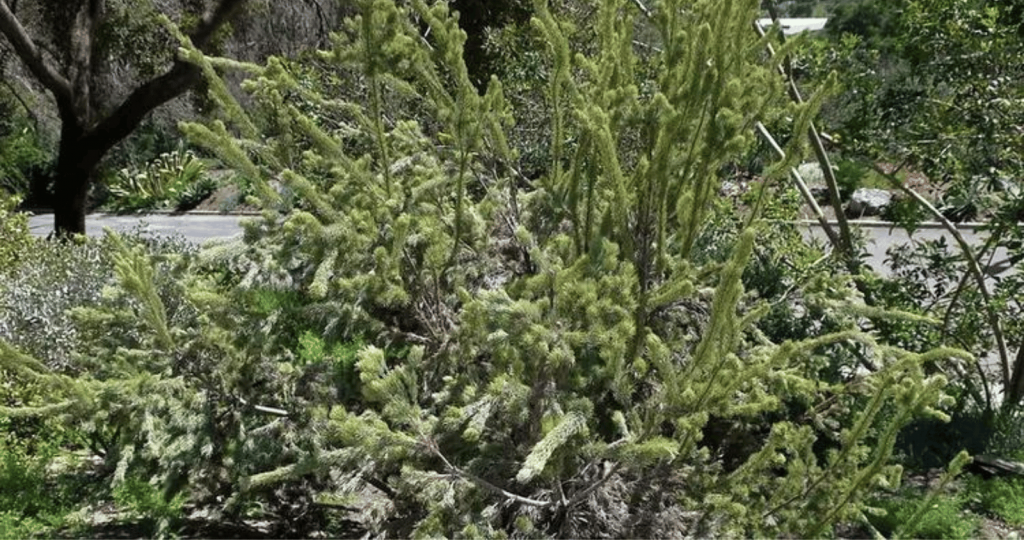
Growth Rate and Soil Improvement
Growth Rate
Woolly Bush have a moderate growth rate, reaching its full height within a few years. On average, it can grow 30cm- 100cm per year.
If you want to improve the growth rate of your Woolly Bush, plant it in well-draining soil that is rich in organic matter. This will help to ensure that the plant receives the necessary nutrients and moisture for healthy growth. Additionally, regular fertilisation with a balanced fertiliser can further promote growth and overall plant health.
Ideal Soil Type
Woolly Bush is not too picky about soil. Well-drained sandy or loamy soils work best. Focus on good drainage to avoid waterlogging, which can be detrimental to your plant. If you live in an area with heavy clay soil, consider amending it with compost or sand to improve drainage. Another important factor to consider is the pH level of the soil. Woolly Bush prefers slightly acidic to neutral soil, so testing and adjusting the pH if necessary can also benefit its growth. To find out what your soil pH is use this kit.
Improving Sandy Soil
To boost sandy soil, add organic matter like compost or well-rotted manure. If you just need a small amount of compost, this is a great option, if you need a larger quantity the best option is to contact your local soil supplier. This improves water retention and nutrient availability. Additionally, incorporating mulch into the soil can help retain moisture and prevent erosion. Another option is to plant cover crops, such as legumes, which can add nitrogen to the soil and improve its overall fertility.
Improving Clay Soil
For clayey soils, mix in coarse sand or organic matter to enhance drainage and aeration. This prevents waterlogged conditions that can harm your Woolly Bush. In addition, adding gypsum to clay soil can help break up compacted soil particles and improve its structure. This allows for better root penetration and nutrient uptake by the Woolly Bush. It is also important to avoid over-watering clay soil, as this can lead to waterlogged conditions and root rot.
Fertilising Woolly Bush – Adenanthos
Do Wooly Bushes Need Fertilising?
Typically the answer is no. Woolly Bushes can do well even in poor quality soils as long as they get enough light and water. However, if you want to increase the growth rate of your Woolly Bush then fertilising will help you achieve that goal.
What Fertiliser Should I Use For Woolly Bush?
Use a slow-release, low-phosphorus fertilizer during the growing season. This will provide a steady supply of nutrients to the Woolly Bush without risking over-fertilization.
Personally, I would use All Rounder, putting down one large handful for big plants, and half a handful for smaller plants placed around the drip line.
This fertiliser has two types of controlled-release Nitrogen which will encourage new growth for 8-12 weeks, most cheaper granule fertilisers may only last 4-6 weeks. It also has a good amount of Potassium which helps with the general health of the plant, is low in Phosphorus, and has a huge number of trace elements, much more than most fertilsers have. In my opinion this is a much better rounded fertiliser than what you commonly get at large hardware stores.
Whilst this is marketed as fertiliser for lawns, don’t get too caught up in the marketing. Remember that lawns and shrubs are both foliage plants, so deep green colour and healthy growth is the goal, this fertiliser will do both. This fertiliser will also work well with other hedges and many other foliage plants like indoor plants and obviously lawns.
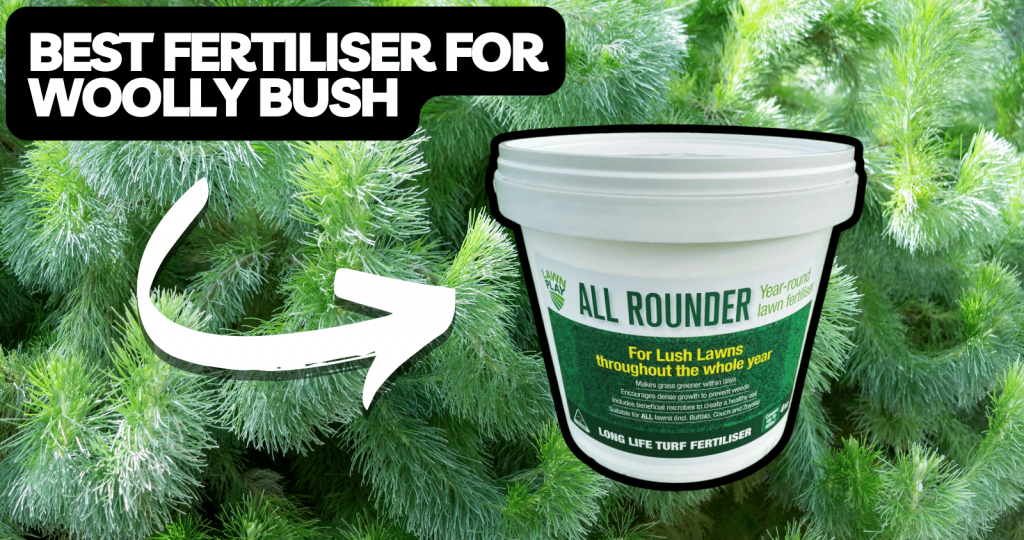
When Should I Fertilise Woolly Bush?
You can apply fertiliser any time of the year, but the most effective time will be in early spring.
How Often Should I Fertilise Wooly Bush?
As mentioned before, once your Wooly Bush is established it probably wont need fertiliser.
However, if you are trying to encourage faster growth, then I would apply All Rounder once every 8 weeks, but I would only do 3 applications a year. Once in September, December and February.
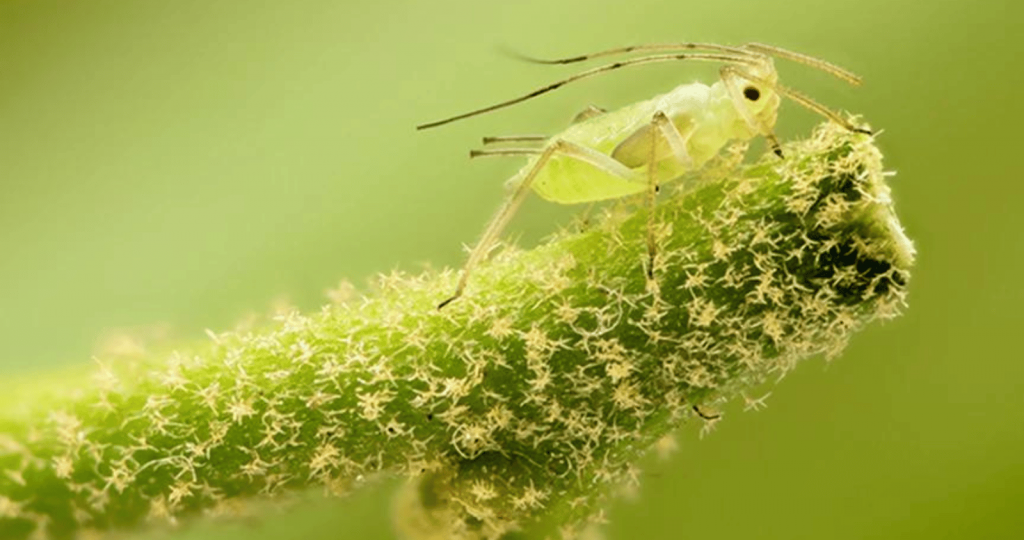
Common Pests and Diseases
Pests
While Woolly Bush is generally pest-resistant, beginners should keep an eye out for aphids and scale insects. Treat infestations with insecticidal soap or neem oil (here is where you can find some neem oil). These pests can be controlled by regularly inspecting your Woolly Bush and promptly addressing any infestations. Additionally, practicing good garden hygiene, such as removing fallen leaves and debris, can help prevent pest outbreaks.
Diseases
Root rot is a potential issue, particularly in poorly drained soils. Ensure proper drainage to prevent waterlogged conditions, reducing the risk of root rot. In addition, fungal diseases such as powdery mildew and leaf spot can affect Woolly Bush. (Here is an organic fungicide that will help with Powdery Mildew and Black Spot.) To prevent these diseases, avoid overhead watering and provide adequate air circulation around the plant. If necessary, apply a fungicide according to the manufacturer’s instructions. Regularly monitoring the plant for any signs of disease and taking prompt action can help maintain the health of your Woolly Bush.
Common Mistakes with Woolly Bush – Adenanthos
- Overwatering: Beginners, resist the urge to overwater. Ensure well-drained soil to keep your Woolly Bush happy.
- Insufficient Sunlight: Plant your Woolly Bush in a sunny spot to encourage healthy growth and flowering.
- Inadequate Soil Preparation: Improve your soil before planting to create a comfortable home for your Woolly Bush.
- Improper Fertilisation: Use a low-phosphorus fertilizer and avoid excessive use to prevent nutrient imbalances.
How do you propagate Adenanthos?
Propagation is commonly achieved through seed germination or semi-hardwood cuttings. Seeds should be sown in well-draining potting mix, and cuttings can be taken during the growing season, usually spring or early summer.
With proper care, these methods can yield new plants to share or enhance your garden. When propagating Adenanthos, it is important to provide the right conditions for seed germination or semi-hardwood cuttings. Seeds should be kept moist but not waterlogged, and cuttings should be placed in a well-draining rooting medium. (We recommend using this rooting hormone to help root formation in your cuttings.) It is also helpful to provide bottom heat for faster root development. With patience and proper care, you can successfully propagate Adenanthos and enjoy the satisfaction of growing your own plants.
How Long Do Woolly Bush Live?
The lifespan of Woolly Bush can vary based on factors such as growing conditions, care, and specific variety. Generally, with proper care, Woolly Bush can live for several decades, making it a long-term and rewarding addition to your garden.
The key to ensuring the longevity of your Woolly Bush is to provide it with the right growing conditions. This plant thrives in well-drained soil that is rich in organic matter. It prefers a sunny location, but can tolerate some shade. Regular watering is essential during the establishment period, but once established, it is relatively drought-tolerant. In terms of care, pruning is necessary to maintain its desired shape and size. Removing dead or damaged branches and thinning out the plant will promote air circulation and prevent diseases. Additionally, applying a slow-release fertilizer in early spring can provide the necessary nutrients for healthy growth. By following these guidelines, you can enjoy the beauty and longevity of your Woolly Bush for years to come.
